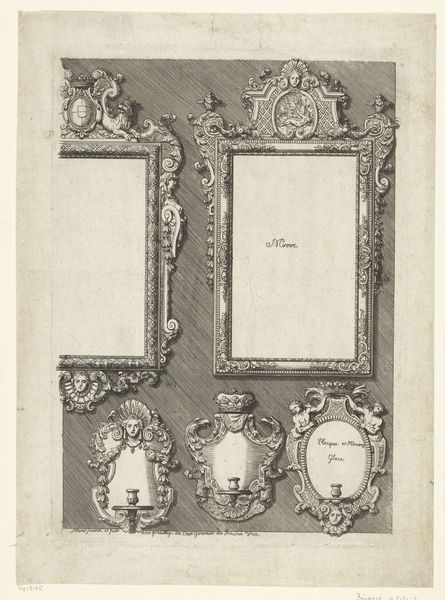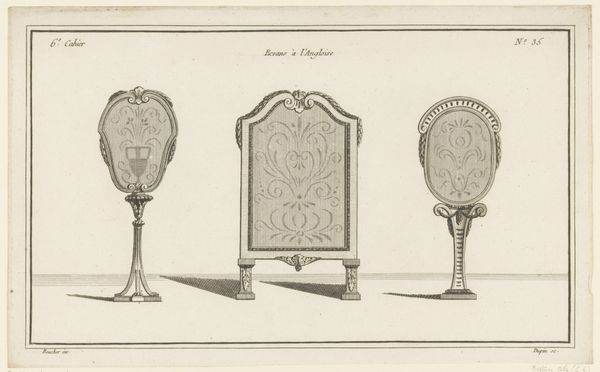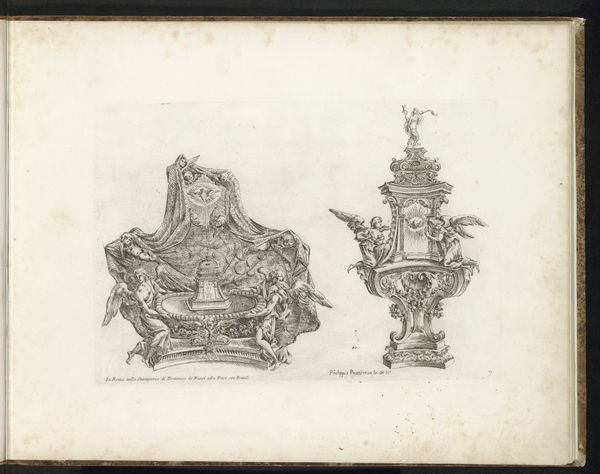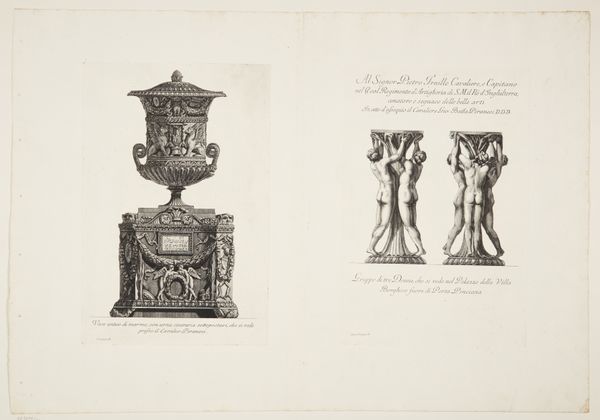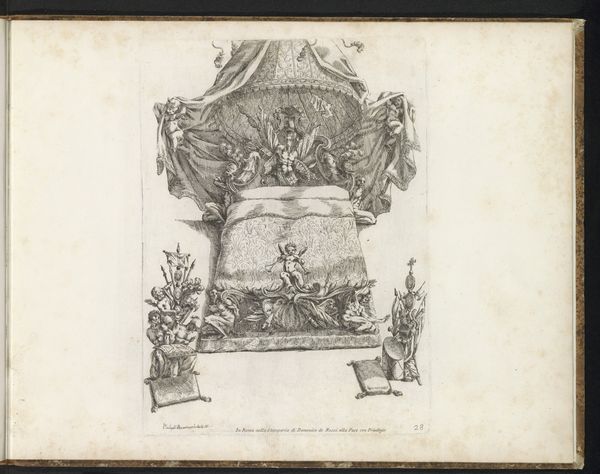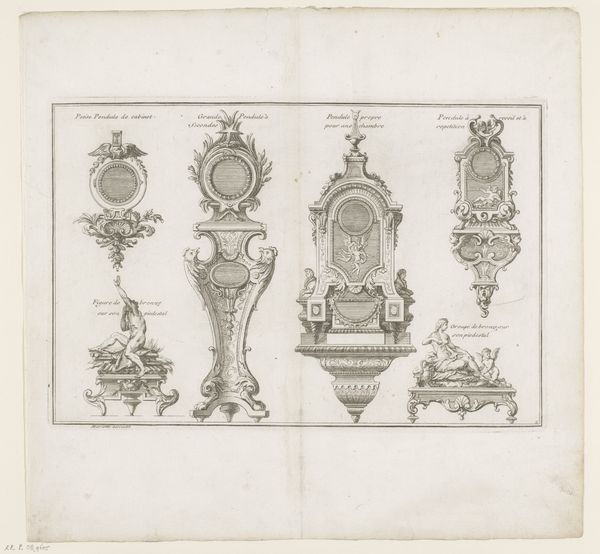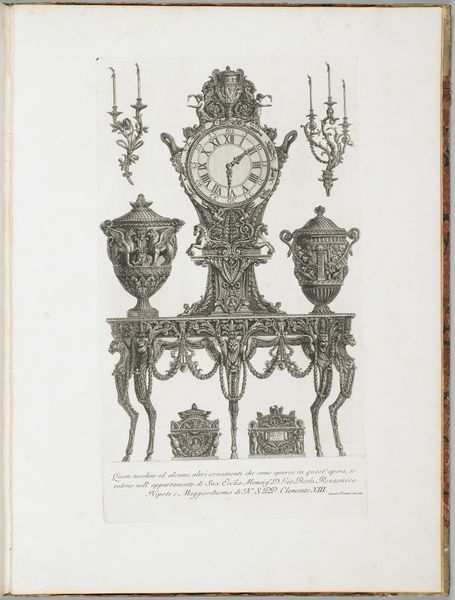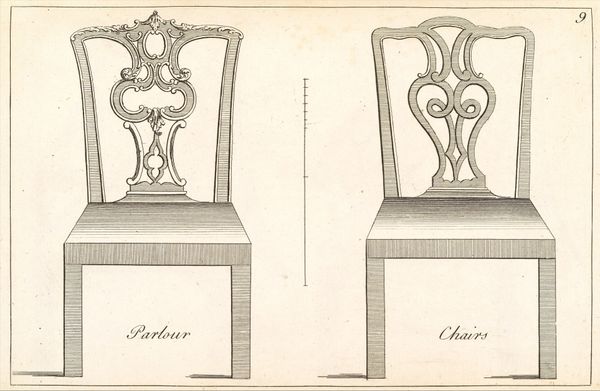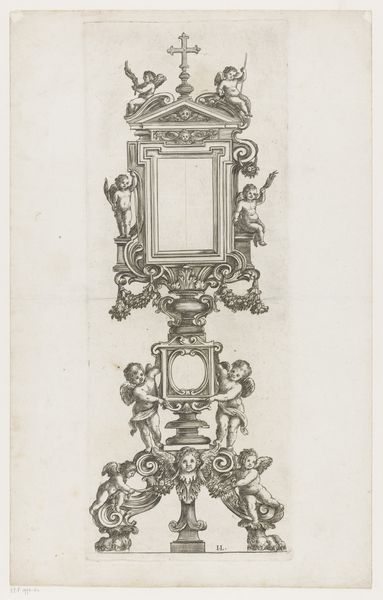
print, engraving
#
baroque
# print
#
old engraving style
#
form
#
line
#
sketchbook drawing
#
decorative-art
#
engraving
Dimensions: height 225 mm, width 331 mm
Copyright: Rijks Museum: Open Domain
Editor: This engraving, "Drie haardschermen," or "Three Fire Screens," from between 1745 and 1775, caught my eye. It depicts three distinct fire screens in meticulous detail. I’m interested in their ornate designs, the repetition of form, and their utilitarian function. How do you approach interpreting this print? Curator: The power of this image, for me, lies in how it demonstrates the industrial processes related to 18th century interior design. This wasn’t just about artistic inspiration, but the means of reproducing and circulating decorative trends for a growing consumer base. We should be asking: how were these designs disseminated, who produced them, and what economic factors allowed for this kind of widespread adoption of a particular aesthetic? Consider the labor involved in the original object and this image. Editor: That’s fascinating! I was initially focusing on the "antique" style alluded to in the descriptions, but you've redirected my attention to the conditions of production. Are you suggesting these prints functioned as prototypes or catalogs? Curator: Precisely. They represent the commercialization of style, transforming it into a commodity that could be reproduced and distributed widely. Look at the lines of the engraving – can you see how the production relates to that distribution? What’s most interesting is thinking about how techniques of reproduction shape and influence design itself. Editor: I do see it! So, what I thought was purely decorative art also reflects broader social and economic systems at play. Curator: Absolutely. This engraving encourages us to think about the materials, methods, and labor behind these seemingly simple objects, challenging any separation of “high” art and everyday design. We’ve gone from antique style to capitalist means!
Comments
No comments
Be the first to comment and join the conversation on the ultimate creative platform.
